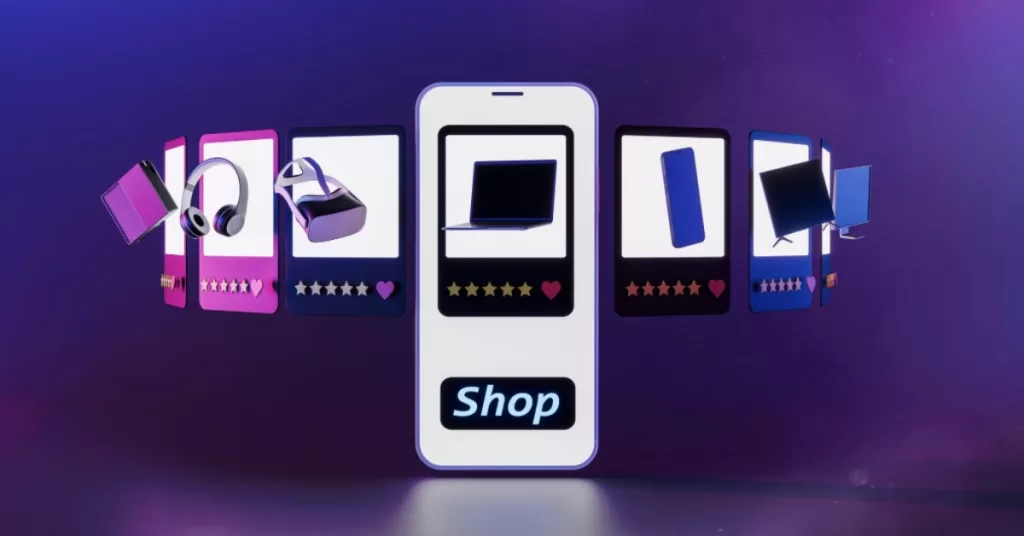With the rise of multichannel and omnichannel strategies, ecommerce chatbots have grown in popularity. And this was needed as the complexity of these strategies can strain the customer support reps.
However, when looking to use a chatbot for your ecommerce business, there are multiple factors to consider. So, let’s take a look at the good, the bad, and the ugly to understand what you would need to look out for.
What are ecommerce chatbots?
Ecommerce chatbots are software applications (sometimes AI-powered) that help your customers navigate your shop easier or help them move forward through their buying journey.
They are designed to remove certain types of friction and address any objections your customers might have.
When used correctly, they can handle some of the workload and free up your time to focus on more impactful things. They can prove to be a very effective tool to scale your business.
The Rise of Ecommerce Chatbots
The popularity of ecommerce chatbots has skyrocketed in recent years due to several factors:
- Improved AI technology: Advancements in natural language processing (NLP) and machine learning have enabled chatbots to understand and respond to customer queries more effectively.
- Increased customer expectations: Today’s consumers are used to immediate and personalized service, which chatbots can deliver.
- Cost savings: By automating customer service tasks, chatbots can help businesses reduce operational costs.
And by 2027, chatbots are expected to become the primary customer service channel for over a quarter of all ecommerce organizations. This shift reflects the added benefits of chatbots for the customer experience.
Types of Ecommerce Chatbots

The important thing to know us that not all chatbots are built the same. Depending on their level of complexity, we can distinguish between simple bots, smart bots, and hybrid ones.
Simple chatbots:
Rule-based chatbots, also known as simple chatbots, are very good for handling specific tasks within an ecommerce store. These chatbots function on a set of predetermined rules and can effectively guide users through specific processes.
Common Use Cases for Simple Chatbots
Order placement: Assisting customers in selecting products and completing the checkout process.
Customer information capture: Collecting necessary data, such as shipping addresses and order numbers, to provide order updates.
FAQ management: Answering common customer inquiries and providing standardized responses.
Benefits of Simple Chatbots
While simple chatbots may have limited capabilities compared to more advanced AI models, they offer several advantages for ecommerce businesses:
Efficiency: Automating routine tasks reduces the workload for human customer service agents.
Consistency: Ensures that customers receive consistent information and assistance.
Cost-effectiveness: Provides a cost-effective solution for handling high-volume customer interactions.
Smart chatbots
Smart chatbots, powered by conversational AI, represent a more advanced form of chatbot technology. Unlike their rule-based counterparts, smart chatbots can understand and respond to a wide range of questions from customers, engage in short conversations, and learn from past interactions.
How Smart Chatbots Work
Similar to virtual assistants like Apple’s Siri and Amazon’s Alexa, smart chatbots can listen, understand, and respond to unique queries. They leverage natural language processing (NLP) to interpret user input and generate appropriate responses. This enables them to communicate in a human-like manner, providing relevant information and assistance.
Their main benefit, along with the already mentioned ones, is the power of personalization. AI chatbots can use customer data to deliver highly personalized experiences. Think of tailored recommendations and offers, which can increase customer loyalty and satisfaction.
Hybrid chatbots
Hybrid chatbots offer a balanced approach. They combine the preset answers or tasks of simple chatbots with the conversational capabilities of smart chatbots. This makes them well-suited for handling more complex tasks that require both predefined rules and flexibility.
Key Features of Hybrid Chatbots
Rule-based foundation: Hybrid chatbots are built on a foundation of predefined rules, providing a structured framework for interactions.
Conversational capabilities: They can understand and respond to unique queries and user intent, offering a more personalized experience.
Customization: Hybrid chatbots can be tailored to specific business needs, going beyond predefined options to offer customized products and services.
While each type of chatbot has its own strengths and weaknesses. The key to choosing the right one lies in understanding your specific needs.
Pros and Cons of Using Ecommerce Chatbots
As with all things, ecommerce chatbots have their pros and cons. Implementing them can modify your customer’s journey and your marketing tactics across the bowtie funnel. So you should always consider all points of view and perform a small-scale test to see whether a chatbot will help your store.
On the positive side
Enhanced Customer Experience
- 24/7 Availability: Chatbots can provide round-the-clock support, ensuring customers always have someone to assist them, regardless of the time zone or day of the week.
- Reduced Wait Times: By instantly responding to customer inquiries, chatbots eliminate long wait times, improving customer satisfaction and reducing frustration.
- Personalized Support: Chatbots can leverage customer data to provide tailored recommendations and assistance, enhancing the overall shopping experience.
Increased Sales
- Proactive Recommendations: Chatbots can proactively suggest products based on customer preferences, browsing history, or purchase behavior, increasing the likelihood of additional purchases.
- Checkout Assistance: Chatbots can guide customers through the checkout process, answering questions and providing support to reduce cart abandonment.
- Personalized Offers: By understanding customer needs and preferences, chatbots can deliver targeted promotions and discounts, incentivizing purchases.
Improved Efficiency
- Automation of Routine Tasks: Chatbots can handle repetitive tasks such as answering FAQs, providing order status updates, and processing returns, freeing up human agents to focus on more complex issues.
- Faster Response Times: Chatbots can provide immediate responses to customer inquiries, reducing the time it takes to resolve issues.
- Scalability: Chatbots can handle a high volume of customer interactions without compromising service quality, making them ideal for businesses experiencing rapid growth.
Cost Savings
- Reduced Labor Costs: By automating routine tasks, chatbots can reduce the need for human customer service agents, leading to significant cost savings.
- Improved Efficiency: Chatbots can streamline processes and reduce operational costs by automating tasks and minimizing errors.
- Increased Productivity: The Support team can focus on more complex and value-added tasks removing the boring and repetitive questions they have to answer. This improves their overall productivity and job satisfaction.
On the negative side
Limited Capabilities
- Understanding Complex Queries: While AI technology has advanced significantly, ecommerce chatbots may still struggle to understand complex or ambiguous queries, leading to incorrect responses.
- Handling Nuanced Conversations: Chatbots may have difficulty understanding and responding to subtle nuances in language or context, potentially leading to misunderstandings or frustration.
Lack of Human Touch
- Impersonal Interactions: Chatbots may not be able to replicate the empathy, understanding, and personal touch that human agents can provide, potentially leading to a less satisfying customer experience.
- Limited Emotional Intelligence: Chatbots may struggle to recognize and respond appropriately to customer emotions, which can be crucial in building strong customer relationships.
Technical Challenges
- Implementation Complexity: If you’re not using an app or a service that offers a no-code solution, implementing a chatbot can be technically challenging, requiring expertise in AI, natural language processing, and software development.
- Maintenance and Updates: Chatbots require ongoing maintenance and updates to ensure they remain effective and up-to-date with the latest AI advancements.
- Integration with Existing Systems: Integrating a chatbot with existing customer relationship management (CRM) systems or other business applications can be complex and time-consuming.
Consumer Preference
- Acceptance of Chatbots: While 40% of users don’t mind interacting with a chatbot, it’s important to note that this doesn’t mean all customers are equally comfortable with automated interactions. Some customers may still prefer to speak with a human agent for certain types of inquiries or in specific situations.
Conclusion
Ecommerce chatbots offer numerous benefits for businesses looking to improve customer experience and drive sales. By understanding the different types of chatbots, their capabilities, and their potential drawbacks, you can make an informed decision about whether a chatbot is right for your business.
Considering that 27% of consumers were unsure if their last customer support interaction was with a real person or a chatbot (PwC), the technology is already impressive. However, because you can’t predict the particular effects on your business, it is always a good idea to test the software and ask customers for feedback.



